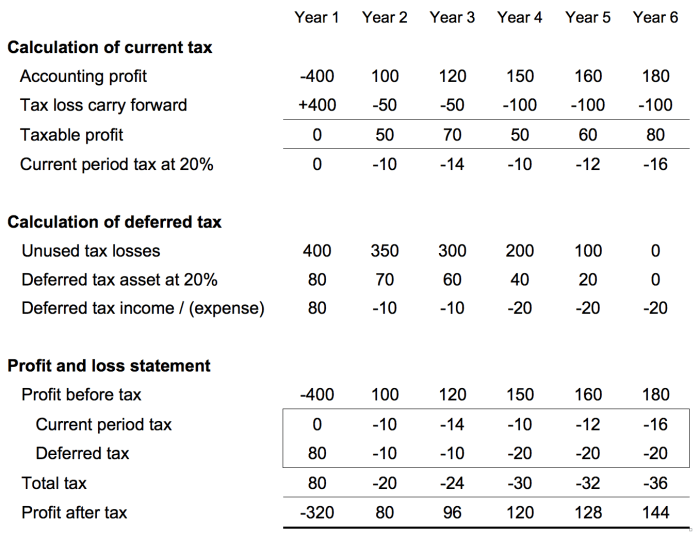Diving deep into the realm of tax-deferred accounts, this introduction sets the stage for a fascinating exploration of financial planning and investment strategies. Get ready to uncover the mysteries behind tax-deferred accounts in a way that is both informative and captivating.
In the following paragraphs, we will break down the concept of tax-deferred accounts, explore the different types available, and provide valuable insights on contribution limits, tax implications, and withdrawal strategies.
What are tax-deferred accounts?
Tax-deferred accounts are investment accounts where you can delay paying taxes on the earnings until you withdraw the money. This means your investments can grow without being taxed each year, allowing for potential higher returns over time.
Examples of tax-deferred accounts
- Traditional Individual Retirement Account (IRA): Contributions are made with pre-tax dollars, and taxes are paid when you withdraw the funds in retirement.
- 401(k) Plans: Employer-sponsored retirement plans where contributions are deducted from your paycheck before taxes, and earnings grow tax-deferred until withdrawal.
- 403(b) Plans: Similar to 401(k) plans but offered to employees of non-profit organizations, public schools, and some government entities.
Benefits of utilizing tax-deferred accounts for financial planning
- Compound Growth: By not paying taxes on your investment gains each year, you can benefit from compound growth as your earnings generate more earnings.
- Lower Current Tax Liability: Contributions to tax-deferred accounts can lower your taxable income in the current year, potentially reducing your tax bill.
- Retirement Savings: Tax-deferred accounts are designed to help you save for retirement, ensuring you have funds available when you stop working.
- Flexibility: Some tax-deferred accounts allow for penalty-free withdrawals for specific needs like buying a first home or paying for education.
Types of tax-deferred accounts
When it comes to tax-deferred accounts, there are several options available to help individuals save for retirement while minimizing tax obligations. Each type of account has its own unique features and benefits, so it’s essential to understand the differences to make an informed decision based on your financial goals.
401(k)
- Employer-sponsored retirement account
- Contributions are made with pre-tax dollars
- May offer employer matching contributions
- Contribution limits set by the IRS
Traditional IRA
- Individual retirement account
- Contributions may be tax-deductible
- Investment options vary
- Income limits for eligibility
Annuities
- Insurance product for retirement savings
- Offer guaranteed income stream in retirement
- Tax-deferred growth on earnings
- May have fees and surrender charges
Choosing the right tax-deferred account
- Consider your current income level and tax bracket
- Evaluate your retirement goals and timeline
- Review the investment options and fees associated with each account
- Consult with a financial advisor for personalized advice
Contribution limits and rules

When it comes to tax-deferred accounts, it’s crucial to understand the contribution limits and rules that govern them. These limits dictate how much you can contribute to these accounts within a given tax year, ensuring you stay compliant with IRS regulations.
Contribution Limits
- For 2021, the annual contribution limit for a Traditional IRA is $6,000 for individuals under 50 years old. If you’re 50 or older, you can make an additional catch-up contribution of $1,000, totaling $7,000.
- For 401(k) plans, the contribution limit for 2021 is $19,500. Individuals over 50 can contribute an extra $6,500 as a catch-up contribution.
- For Health Savings Accounts (HSAs), the 2021 contribution limit is $3,600 for individuals and $7,200 for families. Those 55 and older can contribute an extra $1,000.
Eligibility Criteria
- To contribute to a Traditional IRA, you must be under the age of 70½ by the end of the tax year and have earned income.
- For 401(k) plans, eligibility usually depends on your employer offering the plan, and you must meet their specific criteria.
- To contribute to an HSA, you must be enrolled in a high-deductible health plan.
Penalties and Restrictions
- If you exceed the contribution limits for tax-deferred accounts, you may be subject to penalties from the IRS. For IRAs, you’ll face a 6% excise tax on the excess contribution each year it remains in the account. For 401(k) plans, your employer may need to correct the excess amount, possibly resulting in taxable income.
- It’s important to stay within the limits to avoid penalties and ensure your retirement savings grow efficiently.
Tax implications and withdrawals
When it comes to tax-deferred accounts, understanding the tax implications and withdrawals is crucial for maximizing your savings and minimizing tax burdens.
Tax deferral explained
In tax-deferred accounts, such as Traditional IRAs or 401(k) plans, taxes on contributions and earnings are deferred until you make withdrawals in retirement. This means you can invest more upfront without immediate tax consequences, allowing your money to grow faster over time.
Tax implications of withdrawals
When you start withdrawing funds from tax-deferred accounts, the amount you take out is subject to ordinary income tax. This means you’ll pay taxes at your current tax rate on the withdrawals, including both the contributions you made and any earnings generated.
- Withdrawals before age 59 ½ may incur a 10% early withdrawal penalty in addition to income taxes, unless an exception applies.
- Required Minimum Distributions (RMDs) kick in at age 72 for most retirement accounts, mandating yearly withdrawals that are subject to taxes.
- Converting traditional retirement accounts to Roth accounts triggers immediate taxation on the converted amount.
Strategies for minimizing tax consequences
To reduce the tax impact of withdrawals from tax-deferred accounts, consider the following strategies:
- Plan your withdrawals carefully to control your taxable income each year and avoid jumping into higher tax brackets.
- Use a Roth conversion ladder to gradually move funds from traditional accounts to Roth accounts, spreading out the tax burden over time.
- Consider delaying Social Security benefits to reduce the need for large withdrawals from tax-deferred accounts in the early retirement years.
